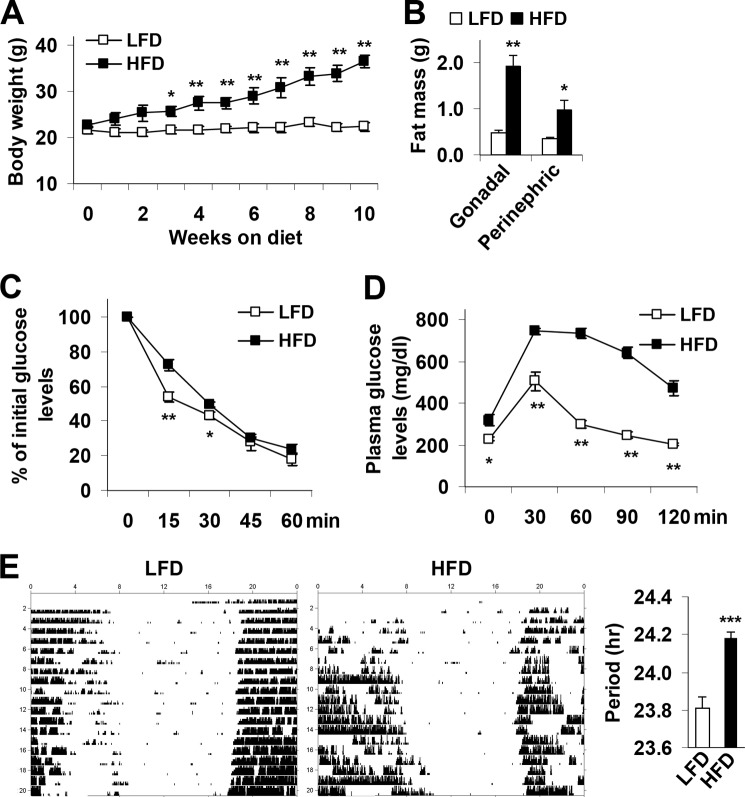FIGURE 1.
Over-nutrition induces obesity-associated circadian clock dysregulation. At 5–6 weeks of age, mPer2Luc mice were fed an HFD or a LFD for 12 weeks (n = 5–10). A, body weight was recorded weekly during the feeding regimen. B, adipose mass. Abdominal fat mass was calculated from the sum of gonadal and perinephric fat content. C, insulin tolerance tests. D, glucose tolerance tests. E, representative circadian rhythms of wheel-running activity in LFD- and/or HFD-fed mice during exposure to constant darkness. The bar graph depicts differences in the free-running period of the activity rhythm between treatment groups. For A–E, data are the means ± S.E. in line and bar graphs. *, p < 0.05; **, p < 0.01; ***, p < 0.001, HFD versus LFD (E, right panel) for the same time point (A, C, and D) or the same fat pad (B). For B–D, mice were fasted for 4 h starting at the same time of the day before tissue collection or physiological assays. For C and D, mice were given a peritoneal injection of insulin (1 unit/kg) (C) or glucose (2 g/kg) (D).

